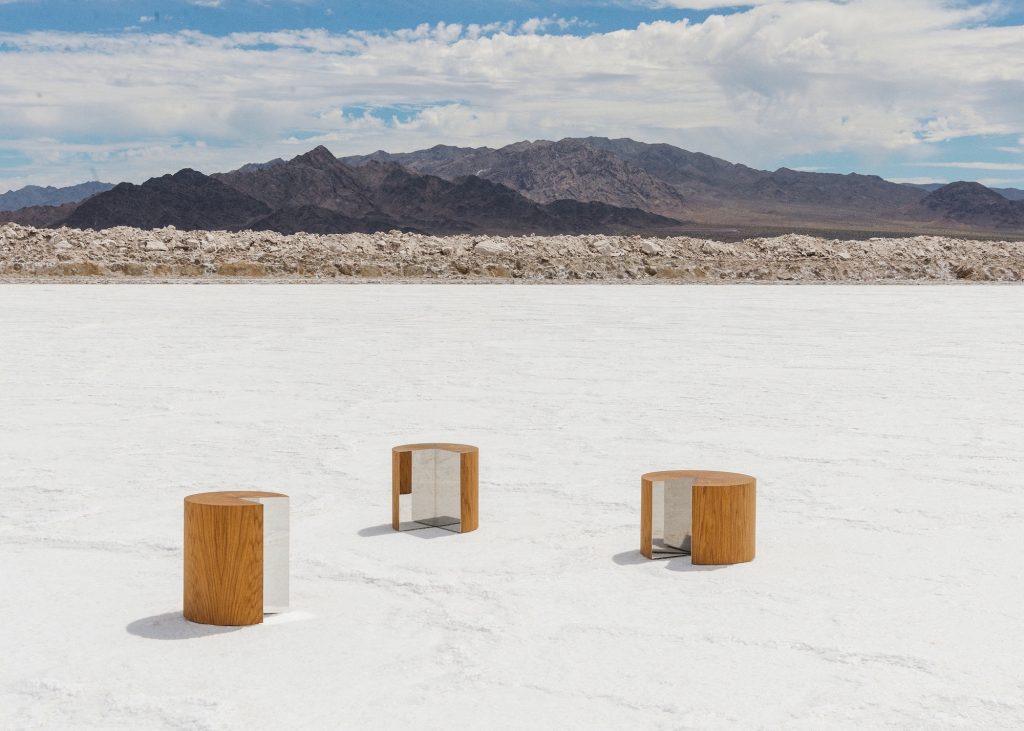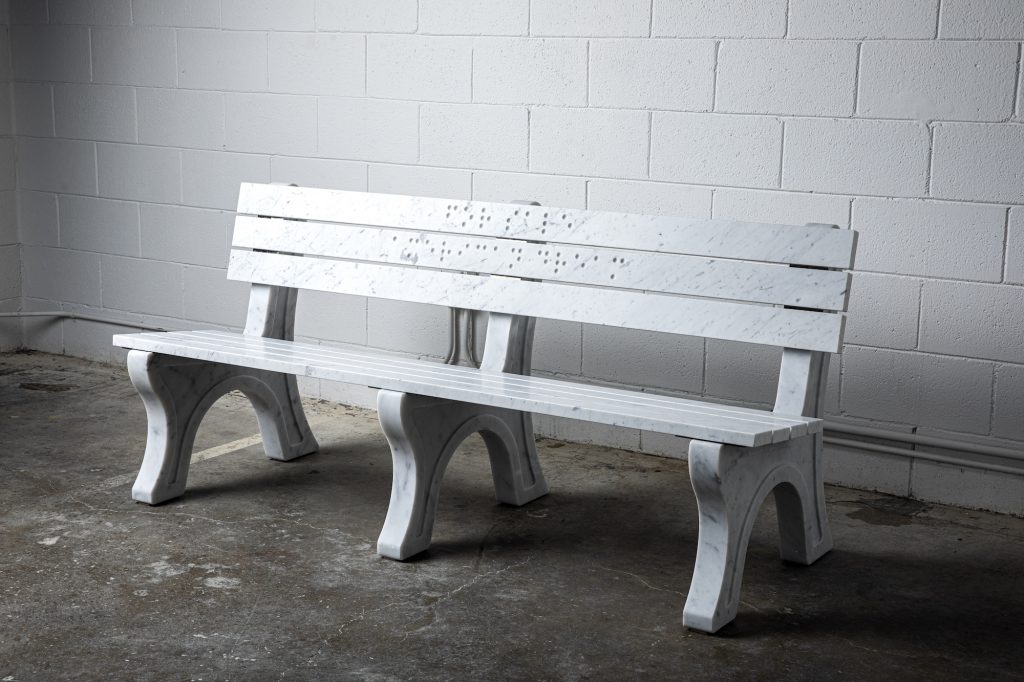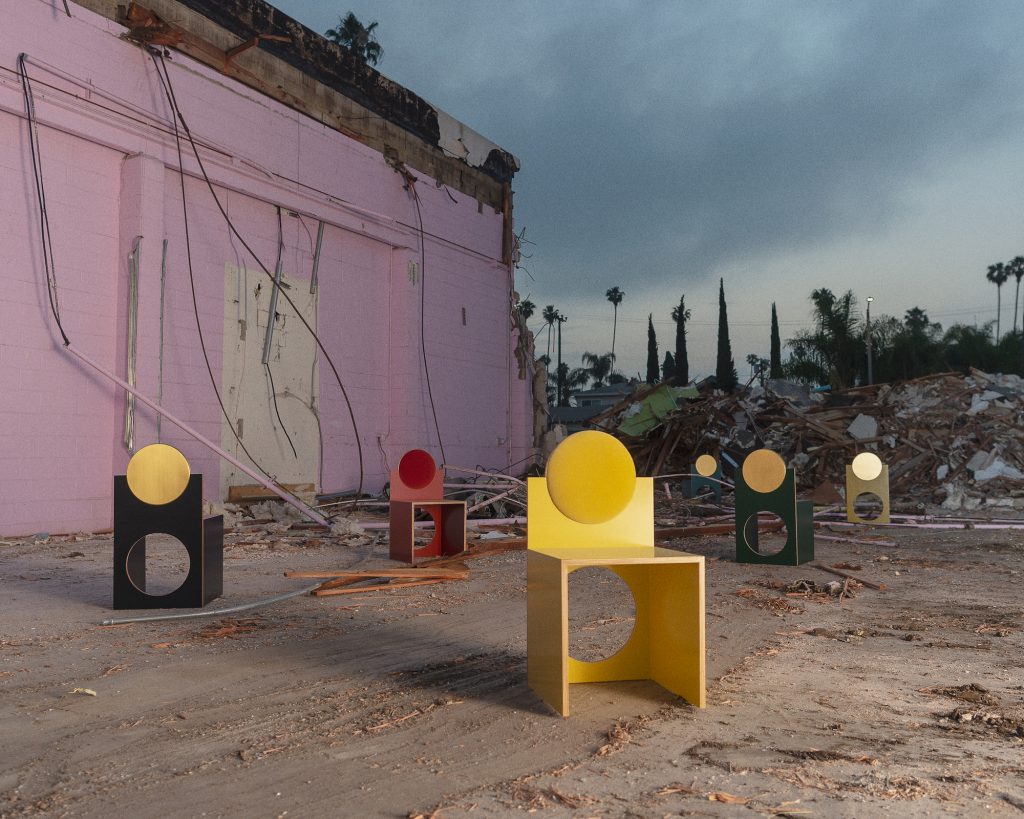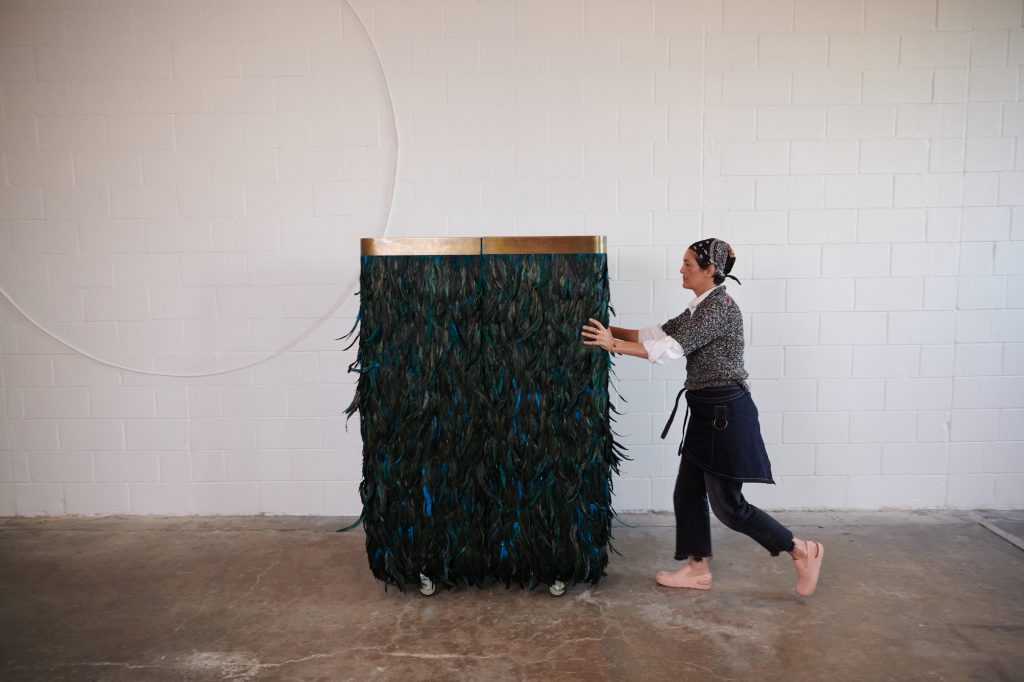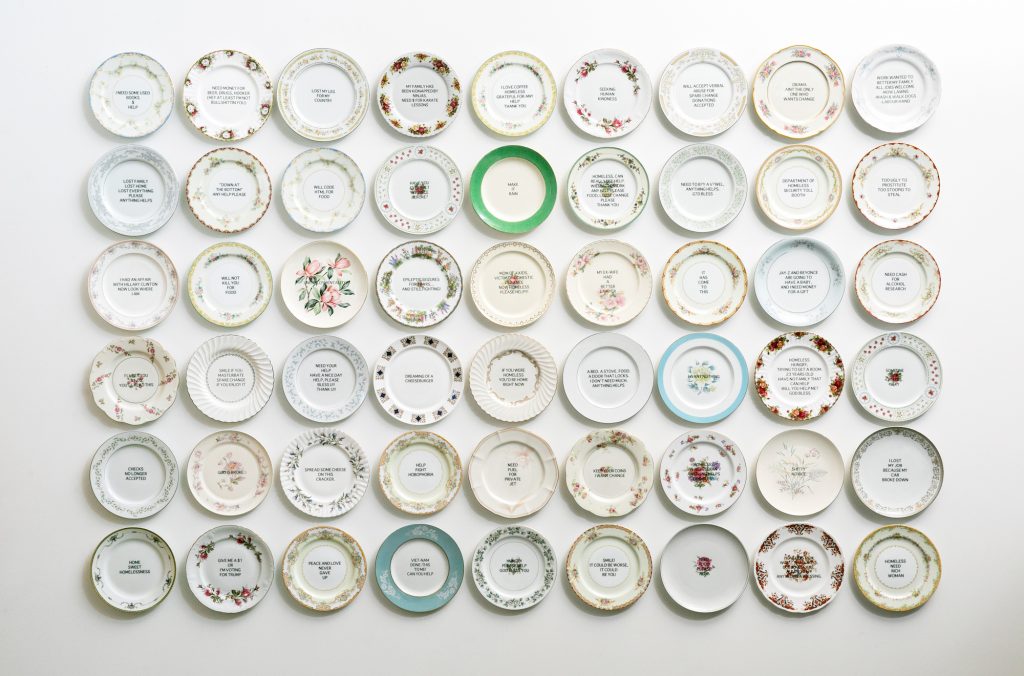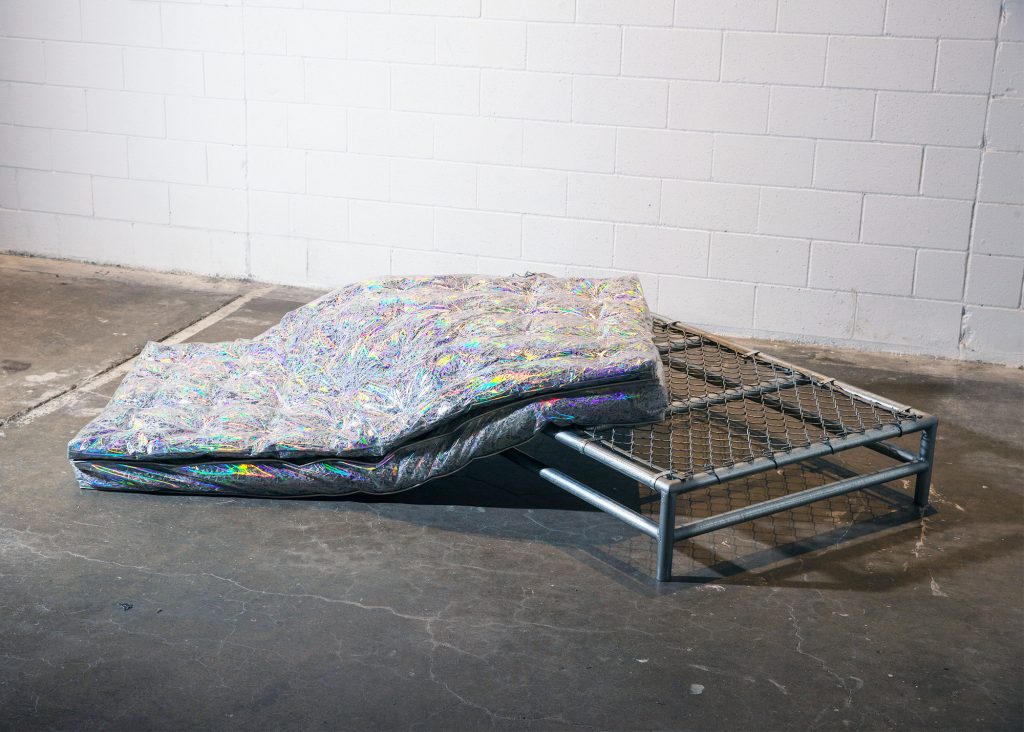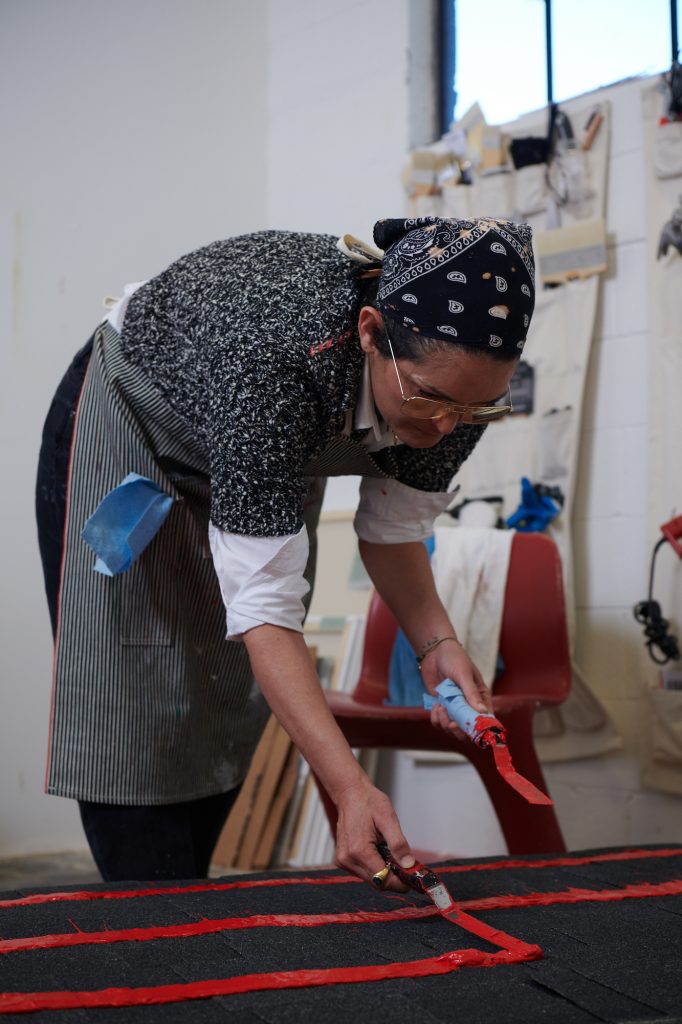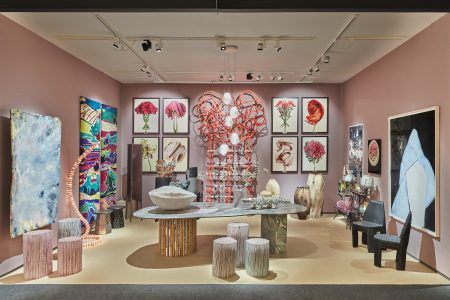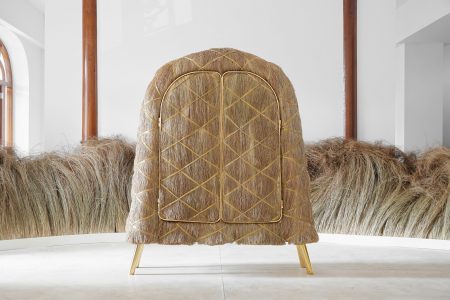Azadeh Shladovsky: Visual Consciousness
TLmag spoke with Los Angeles-based, multi-disciplinary artist, Azadeh Shladovsky, whose layered work explores ideas of visual consciousness, questioning not only how we see, but in some cases who or what we allow ourselves to see.
Whether through beautifully designed sculptural furniture, conceptual art or film, Azadeh Shladovsky challenges our perceptions and peels back the artifice on social issues such as the unhoused, the current state of the ‘American Dream,’ as well as assumed ideas around language and communication. Her use of braille, textural surfaces, or unexpected materials heighten the senses and directly engage the viewer. Shladovsky’s personal approach to making is also linked to deeper issues around grief, loss, and personal connection. In 2013, she established a new studio as a place not only to make work, but to be a space of community and engagement, where artists and others can share ideas, participate in exhibitions and add to the conversation.
TLmag: Talk briefly about your background and how you first become engaged with art and design.
Azadeh Shladovsky: Though my formal exposure to the visual arts didn’t take place until my teen years, I was engaged in creative expression from the time I was old enough to hold a pencil. I came to Los Angeles as a very shy 4-year-old with Iranian parents who immigrated in the early 70’s, nearly a decade before the mass exodus that resulted from Iran’s political and religious revolution. While my parents’ sole focus was to carve a new life in a community that didn’t necessarily welcome them, I found myself leaning heavily on artistic expression to create a safe space that I could control. Most of the time, I felt like I was*observing life more than participating in it * (those early years laid the groundwork of what I now refer to as visual consciousness). While I lacked the skills to thrive socially, I more than made up for it by inventing a fertile inner world rooted in creative expression. Drawing was my first love followed by poetry, but I also loved to paint. At the age of 11, my family left Los Angeles for Spain under challenging circumstances. It wasn’t until the age of 12, as a high school student in Madrid, that I received a more formal arts education, that challenged me creatively, and recognized me for my abilities. Because I lived in a home where life circumstances kept my parents from engaging me in a meaningful way, they had very little to no bandwidth to either recognize my interest in art or my budding talents. Consequently, the option of pursuing art either academically or practically as a career was off the table.
Throughout college and the decade that followed, I continued to practice art as a private outlet to manage that which I struggled to resolve intellectually or emotionally.
Years later, when my 2-year-old daughter lost her sight as a complication of a brain tumor, I was forced to re-learn how to see and my own life came into focus. She gave me the courage to follow my truth. After losing her to cancer, I knew the only path forward was the one that I paved years earlier, as an artist trying to resolve the pain of human vulnerability while expressing the beauty of everything she taught me to see anew.
TLmag: Your creative practice includes making both functional art and design objects as well as fine art – did one discipline come first for you or have you always moved between them as you do now?
A.S.: Both the fine art and functional art develop concurrently as I’m working through conceptual ideas. All my work begins in a conceptual framework rooted in questions around sight and visual consciousness that manifests in material expression. My process allows materials to guide the narrative in one direction or another. One of the reasons I love creating functional art is because it allows people to engage in the work in 3D where touching plays a primary role in seeing the work and reinforces sight as a multi- sensory experience.
TLmag: Who or what are some of your artistic inspirations?
A.S.: I struggle with the word inspiration not because it doesn’t exist but because it doesn’t exist in a vacuum. I see inspiration as a state of mind where I am achieving maximum flow; This flow or elevated consciousness only results when we can access our seen and felt experiences on a deeper level. At that point, those experiences leave us feeling the need for questioning and resolution which is the exact point where the process of artistic expression begins.
TLmag: You bring in such compelling textural surfaces into your work – from tufted wool or velvet to steel and mirrors. Tell us about your materials – what draws you to them? How do they act as a kind of language in your work?
A.S.: Materials provide the ideal sensory language necessary to express ideas and concepts rooted in visual awareness. One of the reasons why functional art plays such a big role in my practice is because it elevates the haptic experience by allowing for complete sensory immersion through touch. I love exploring and experimenting with all materials but recently created a functional work titled, Under My Skin where I used rooster feathers to have a conversation about the complexity and limitations of identity. The feathers symbolize the dichotomy of skin; as the largest organ, skin receives and processes critical information about the world around us while in turn also renders a limited visual/social representation of who we are.
TLmag: Social and humanitarian concerns are an integral part of your practice, and you are involved with several non-profit community arts programs including prison arts collective and lens on life. Would you talk about this?
A.S.: My work explores the human tendency toward ‘social blindness’ and specifically the process(-es) that drive who we choose to see, acknowledge, and engage. The universal human need to be seen is often usurped by sociocultural norms that dictate who deserves to be seen. This disconnect has always weighed heavily on me and reinforced by my own life experiences. While I use artistic expression to work through these concerns, engaging my local and global community is just as important in my practice; in this way, life and art become one of the same.
TLmag: Do you think there is more of an awareness in recent years by artists and designers about the role they can play in bringing wider public attention to social issues and community concerns?
A.S.: I think the sociopolitical landscape of our time has created an urgency for action that cannot be ignored. Anyone with a voice should exercise it and use it for good. Luckily as artists, it is our job to have an opinion and be vocal. What I find concerning is when I see silence and inaction by people who have decided it’s not good for their brand. Social capital should not overshadow social equity given that we are all vulnerable to the same existential threats.
TLmag: Is there a project that you are looking forward to working on this year?
A.S.: Yes! Very grateful to share that I am working on several projects this year that I’m truly excited about. Though I’m not able to reveal details just yet, they involve collaborations with new materials.
